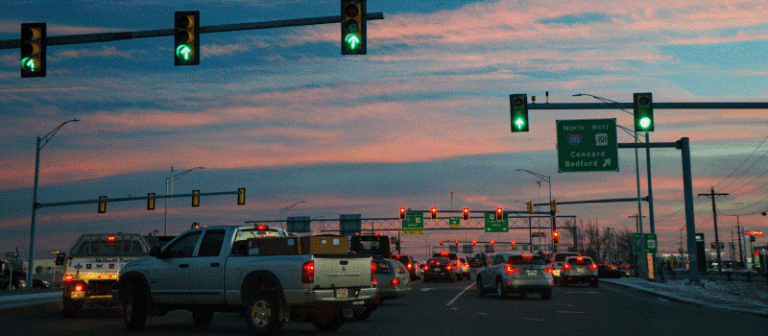AI-Driven Traffic Light System
AI-driven traffic light system for a country
To develop a state-of-the-art, AI-driven traffic light system for a country, several key components involving both hardware and software must be integrated:
- AI-Controlled Traffic Lights: Utilize artificial intelligence for smart traffic light control, which can adapt to real-time traffic conditions. This would involve AI algorithms analyzing traffic patterns and adjusting light sequences for optimal flow.
- Traffic Data Collection: Implement magnetic induction loops or other sensors to collect data on vehicle presence and movement at intersections. These sensors will feed real-time data to the AI system for efficient traffic management.
- Advanced Object Detection: Use AI-based intelligent systems for object detection in video streaming. This technology can identify different types of vehicles and pedestrians, facilitating more nuanced traffic light control.
- Real-life Testing and Simulation: Conduct simulations and real-life testing at congested junctions to determine the effectiveness of the AI system in improving traffic flow. This step is crucial for fine-tuning the system before widespread implementation.
- Integrated Traffic Management: Combine smart traffic lights with connected vehicles and congestion charges informed by AI. This integrated approach can significantly reduce congestion and improve overall traffic management.
- Live Camera Feed Analysis: Employ AI systems that can read live camera footage and adapt traffic lights in real-time. This helps in keeping the traffic flowing smoothly and reducing congestion, especially during peak hours.
- Hardware Infrastructure: Install advanced cameras and sensors at key junctions, along with the necessary networking hardware to enable real-time data transmission and processing.
- Software Infrastructure: Develop a centralized AI software platform that can process data from various sources, run predictive models, and adjust traffic light timings accordingly.
- Training and Maintenance: Train local personnel in the operation and maintenance of the system and establish a framework for regular updates and technical support.
- Public Information Systems: Implement systems to inform the public about real-time traffic conditions, possibly through mobile apps or digital displays, aiding in better route planning.
To develop an AI-driven traffic light system in a country, a comprehensive integration of hardware and software solutions along with specific deliverables is required:
- AI-Controlled Traffic Lights: Implement traffic lights powered by AI algorithms to analyze and respond to real-time traffic conditions, enhancing flow and reducing congestion.
- Traffic Data Collection Hardware: Use magnetic induction loops or advanced sensors at intersections to collect real-time data on vehicle and pedestrian movement, feeding this information into the AI system for analysis.
- Advanced Object Detection: Incorporate AI-based systems for object detection through video streaming, identifying various types of vehicles and pedestrians to facilitate nuanced traffic control.
- Real-Life Testing and Simulation: Conduct simulations and tests at busy junctions to assess and refine the AI system’s effectiveness in managing traffic flow.
- Integrated Traffic Management Software: Develop software that combines AI-managed traffic lights with connected vehicle systems and congestion pricing models to optimize traffic flow and reduce congestion.
- Live Camera Feed Analysis: Utilize AI systems for analyzing live camera feeds, enabling dynamic adaptation of traffic signals in real-time to maintain smooth traffic flow, especially during peak hours.
- Hardware Infrastructure: Install sophisticated cameras, sensors, and network equipment at strategic locations for data transmission and processing.
- Centralized AI Software Platform: Create a centralized platform to process data from various sources, run predictive models, and control traffic light timings.
- Training and Maintenance Program: Train local personnel in operating and maintaining the AI-driven system and establish a regular update and maintenance protocol.
- Public Information Systems: Set up digital displays or mobile apps to provide the public with real-time traffic information, aiding in route planning and reducing travel time.
By implementing these hardware and software solutions, a country can significantly improve traffic management, leading to safer, more efficient roadways.


